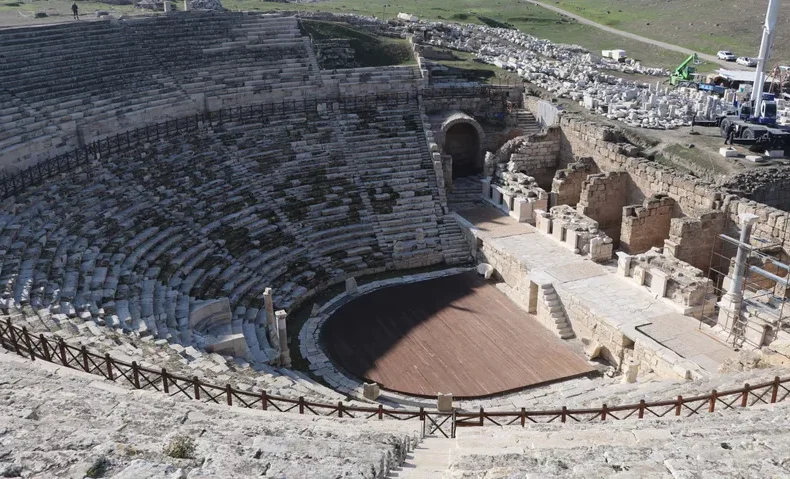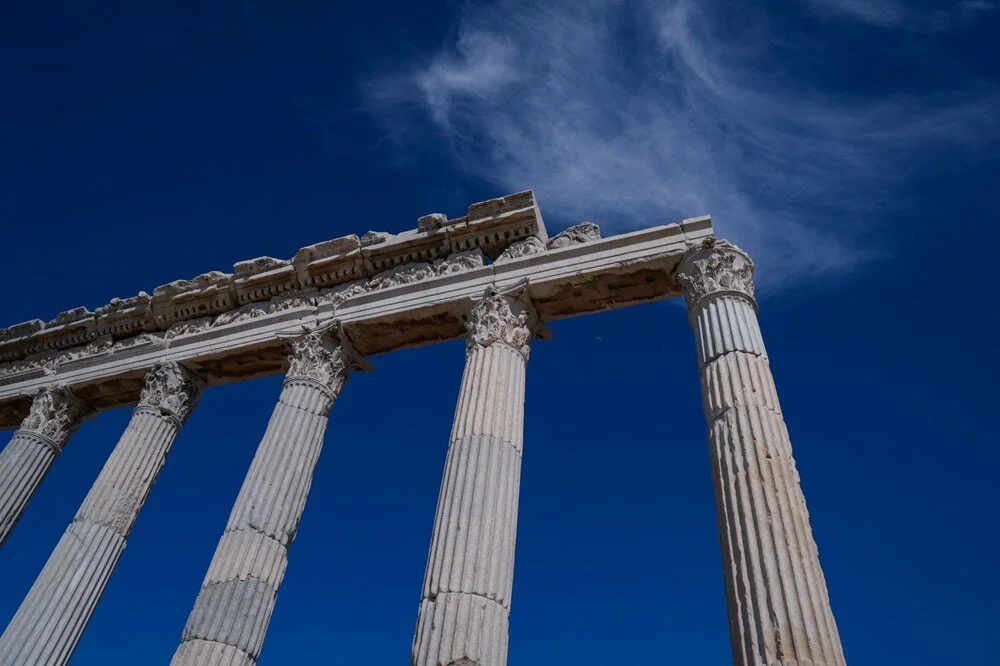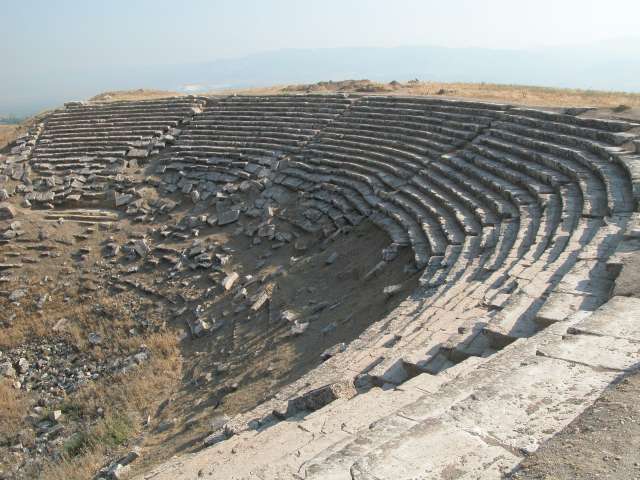
Restoration of Laodicea’s Ancient Theater Completed
The restoration work of the ancient theater of Laodicea, founded by Seleucid King II. Antiochus in honor of his wife Laodice in the 3rd century BC, has been completed.
Laodicea, located in Denizli province of modern-day Türkiye, is listed on the UNESCO World Heritage Temporary List. The city is also home to one of the first seven churches of Christianity.
The ancient theater, built in the 2nd century BC, hosted artistic and cultural events during the Hellenistic Roman Period, but it fell out of use after the spread of Christianity in the 5th century AD. The theater has a capacity of 15,000 people.
To restore the theater, which was destroyed by major earthquakes, restoration work began in 2019 under the leadership of Prof. Dr. Celal Şimşek, the head of the Archaeology Department at Pamukkale University.

The restoration efforts received financial support from the Denizli Metropolitan Municipality and the Aegean Development Agency. As a result of the work, the ancient theater, which was built 2,200 years ago and had been destroyed by earthquakes, has been revived and returned to its former glory.
Excavation Director Prof. Dr. Celal Şimşek stated, “We have been conducting excavation work here on behalf of Pamukkale University and the Ministry of Culture and Tourism for 21 years. The West Theater is significant as it is the first theater of the Hellenistic period in this city. The West Theater was built in the 2nd century BC. It experienced an earthquake in the 3rd century AD and was rebuilt. It was destroyed in the earthquake that struck Western Anatolia in 368 AD and was rebuilt again. The theater suffered significant damage in the earthquake of 494 AD. We started restoration work on the theater in 2019 as part of the project. Within two years, we have restored the seating steps of the theater, which has a diameter of 96 meters. This restoration work is important in terms of being close to 90% original according to international criteria in world history,” he said.

Prof. Dr. Şimşek continued, “From the inscriptions we found here, we learned that the West Theater is not only an early theater but also a state theater. Many inscriptions indicate that it was a public theater and that many free events were held here for the public. We are carrying out the work on the stage building as part of the Ministry of Culture and Tourism’s ‘Heritage for the Future’ project. In previous years, we diligently restored the seating steps of the West Theater. We have started the restoration of the flooring above the vaulted section of the stage and especially the 16 columns consisting of four podiums on the first floor. We are meticulously carrying out the ongoing restoration in the theater.”
Cover Photo: DHA
You may also like
- A 1700-year-old statue of Pan unearthed during the excavations at Polyeuktos in İstanbul
- The granary was found in the ancient city of Sebaste, founded by the first Roman emperor Augustus
- Donalar Kale Kapı Rock Tomb or Donalar Rock Tomb
- Theater emerges as works continue in ancient city of Perinthos
- Urartian King Argishti’s bronze shield revealed the name of an unknown country
- The religious center of Lycia, the ancient city of Letoon
- Who were the Luwians?
- A new study brings a fresh perspective on the Anatolian origin of the Indo-European languages
- Perhaps the oldest thermal treatment center in the world, which has been in continuous use for 2000 years -Basilica Therma Roman Bath or King’s Daughter-
- The largest synagogue of the ancient world, located in the ancient city of Sardis, is being restored











Leave a Reply